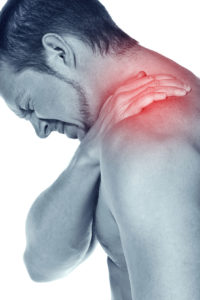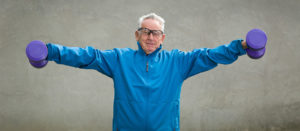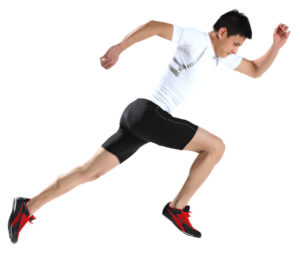Anatomy/Kinesiology
When Will I See Results?
Has a client ever asked you, “How many times a week should I do Pilates?” You may have answered, “It depends.” Truthfully, both the question and the response are loaded. Many things factor into the ideal Pilates program, including the client’s fitness level and goals. While some use Pilates for rehabilitation, other popular goals include increased strength, enhanced flexibility and the sculpted “Pilates body.”
Understanding Inflammation
Inflammation is the body’s immune, self-protective and healing response to harmful stimuli, irritants, pathogens and damaged cells. Most inflammation is acute, such as when you sprain your ankle. Symptoms of inflammation include swelling, redness, pain and (sometimes) impaired movement or function.
Playing Hurt
When Gray Cook was a high-school athlete, his coaches would comment, “That Gray Cook sure can play hurt.” He had over 20 fractures before he was 18, what with his love of football and motorcycles. He played while hurt, he says, because he had the ability to block out pain. Flash forward to 2014, and Cook—now a practicing physical therapist, certified orthopedic specialist and founder of Functional Movement Systems in Chatham, Virginia—was no longer able to block out neck pain. It was affecting his life, his work, and his ability to share his message of fitness and health.
Coronary Artery Disease: What Every Fitness Professional Needs to Know
Developing a thorough understanding of coronary artery disease (CAD) can help fitness professionals fight one of the world’s deadliest diseases. ?
How deadly? For starters, CAD is the leading cause of death around the world, accounting for 13.2% of all deaths in 2012 (WHO 2014a). It kills almost 380,000 Americans every year (CDC 2014a). Exercise professionals can do something about these statistics by designing fitness programs that reduce CAD risk factors in clients while improving their quality of life. ?
Research Sheds New Light on the Exercise “Afterburn”
Some of us call it “afterburn”—the elevated calorie burning that lasts long after exercise is over. The scientific literature defines it as excess postexercise oxygen consumption, or EPOC (see Figure 1). ?
For the most part, EPOC represents the body restoring itself from physiological variables elevated by exercise. EPOC is an important physiological phenomenon for fitness professionals because it can play a contributing role in weight management. ?
Stable or Unstable Training: Which Is Better?
Is stable or unstable training superior for improving physical adaptation? Recently, researchers compared the two modalities to see which was better for developing strength, power and velocity.
OTS Indicator Checklist
OTS Indicator Checklist
Personal trainers are encouraged to use this OTS Indicator Checklist to help identify or prevent OTS in clients. Although this list was developed from scientific research, there currently is no research consensus on how many of these factors must be present (and to what degree) to confirm OTS.
PERFORMANCE AND FATIGUE INDICATORS
These may be symptoms of OTS:
Excessive Thoracic Kyphosis: More Than Just Bad Posture
Excessive thoracic kyphosis (ETK) is a disproportionate forward rounding or curvature of the middle and upper back, also known as the thoracic spine (Kendall, McCreary & Provance 2005). ETK is an extremely common musculoskeletal imbalance brought on by prolonged time in some postural positions; exercise and/or activity choices; environmental factors; myofascial dysfunction; intolerances to food and/or other allergic reactions; and psychological stress.
Rehabilitation Breakthroughs With Eccentric Training
A recent special edition of the Journal of Applied Physiology focused on eccentric training, best defined as using active force to produce muscle tension while the muscle is lengthening.
Prehabilitation Strengthening Exercises for Knee and Hip Arthroplasty
Fitness professionals may work in concert with a physical therapist to encourage a client to engage in “prehab” to maintain or enhance his strength preoperatively for knee or hip arthroplasty. (Shakoor et al. 2010). Pain is often a limiting factor, and it may be difficult for the client to participate in even the most basic daily activities. Below are a few suggested exercises.
KNEE ARTHROPLASTY
Isometric quadriceps sets. Lie on back with legs extended. Tighten quads and push knee into mat/surface. Hold 10 seconds. Do 10 repetitions, 5 times per day.
Heart Rate Variability & Overtraining
Can New Research Prevent an Age-Old Paradigm?
Heart rate variability (HRV) is a reliable marker of physiological factors that directly affect the rhythms of the heart (Acharya et al. 2006). Acharya and colleagues explain that HRV reflects the heart’s ability to adapt to changing circumstances—stress, exercise and disease—by balancing the regulation of the autonomic nervous system, which controls bodily functions such as breathing, heart- beat and digestion.
Eight Fascinating Facts About Fascia
Fascia has been enjoying the limelight in the fitness industry as one of the hottest topics in recent fitness conference programming, workshops and publications. However, after the dust has settled, will fitness and wellness professionals still be scratching their heads and wondering, “Okay, great, it’s important, but what do I do with it?”
Neuromuscular Training and ACL Injury
According to a report published in the Journal of Athletic Training (2012; 47 [5], 589–90), anterior cruciate ligament injuries lead to about 113,000 ambulatory-care visits and about 75,000 outpatient surgical reconstructions among active youth and adults in the United States each year. A recent study suggests a potential key to minimizing ACL injury danger among young-adult athletes: neuromuscular training.
The Rib-Shoulder Connection
About 2 million people in the U.S. visit the doctor annually for rotator cuff problems (AAOS 2008), and at least 3% of adults will experience adhesive capsulitis, or frozen shoulder (Manske & Prohaska 2008). Multiple exercises can help prevent or postpone surgery, but what if they don’t seem to work? When regular shoulder exercises don’t help your client improve, or if they hurt too much, it’s time to start looking beyond the shoulder girdle.
Anatomy in Action: The Psoas Major
The psoas major is one of the most controversial muscles among Pilates teachers and anatomy nerds. It’s a critical muscle for functional movement of any kind and affects almost everything we do, from sitting and standing to running and dancing.
The Human Heart and Its Cardiac Cycle
The cardiac cycle describes three phases of a single heartbeat:
5 Questions and Answers About the Heart
1. Does heart rate recovery indicate anything about a person’s health?
Yes. Cole et al. (1999) showed that a delayed decrease in heart rate (less than 12 beats slower) during the first minute after a maximal graded exercise may indicate decreased vagal nerve activity and is a powerful predictor of overall mortality.
2. Does exercise training improve recovery heart rate?
Yes. Seiler, Haugen & Kuffel (2007) showed that recovery heart improvement (faster recovery) occurs as fitness level progressively increases.
The 3D Booty: Training the Glutes for Form and Function
Booties, butts, glutes and rumps. Our fascination with enhancing our posterior spans the training spectrum, from the aesthetic-focused client to the performance-driven athlete. Yes, we want our backsides to look better, but we also need them to function more effectively, judging from the increasing number of knee and low-back injuries (Hoy et al. 2012).
Corrective Exercise for Shoulder Impairments
Movie stars, athletes and brides-to-be work hard to develop shoulders that are aesthetically pleasing, and shoulders are an integral part of the big somatic “picture.” However, there is much more going on in this area than meets the eye. The shoulder complex involves more than one joint, and healthy, functional shoulders are more desirable than ones that merely look good on camera. After all, looking good for the wedding is great, but not being able to carry your luggage on your honeymoon is not.
Foot Facts
IDEA Fitnographic:

















